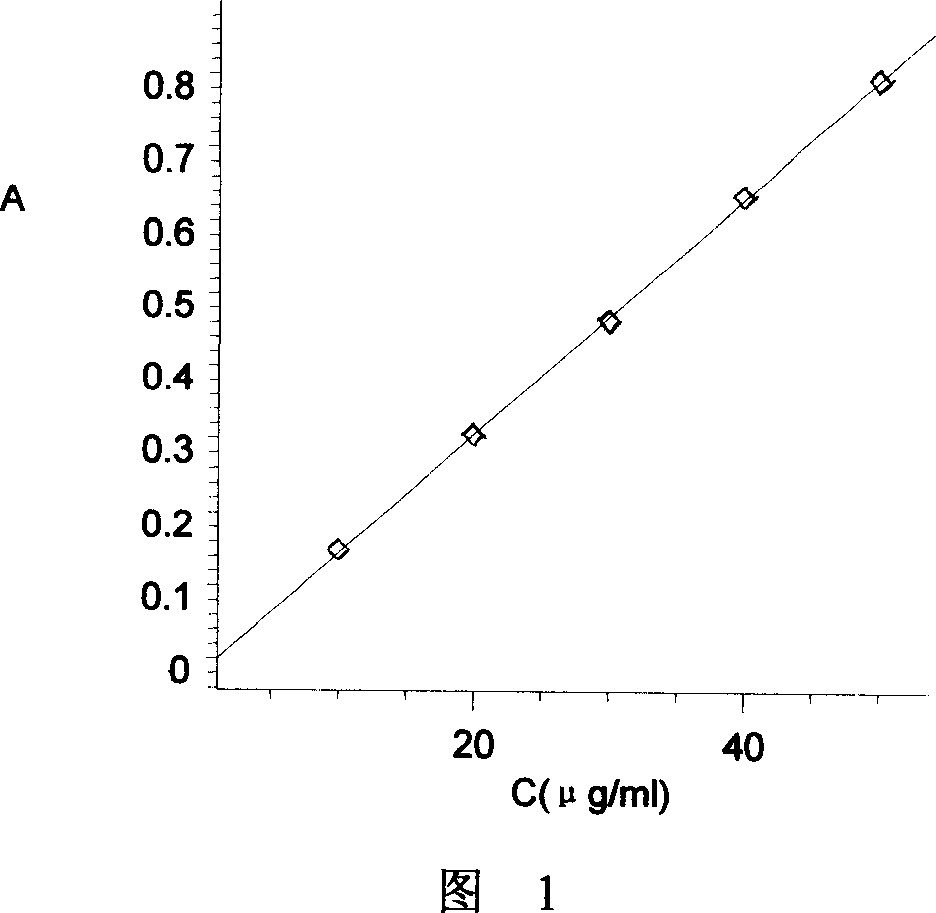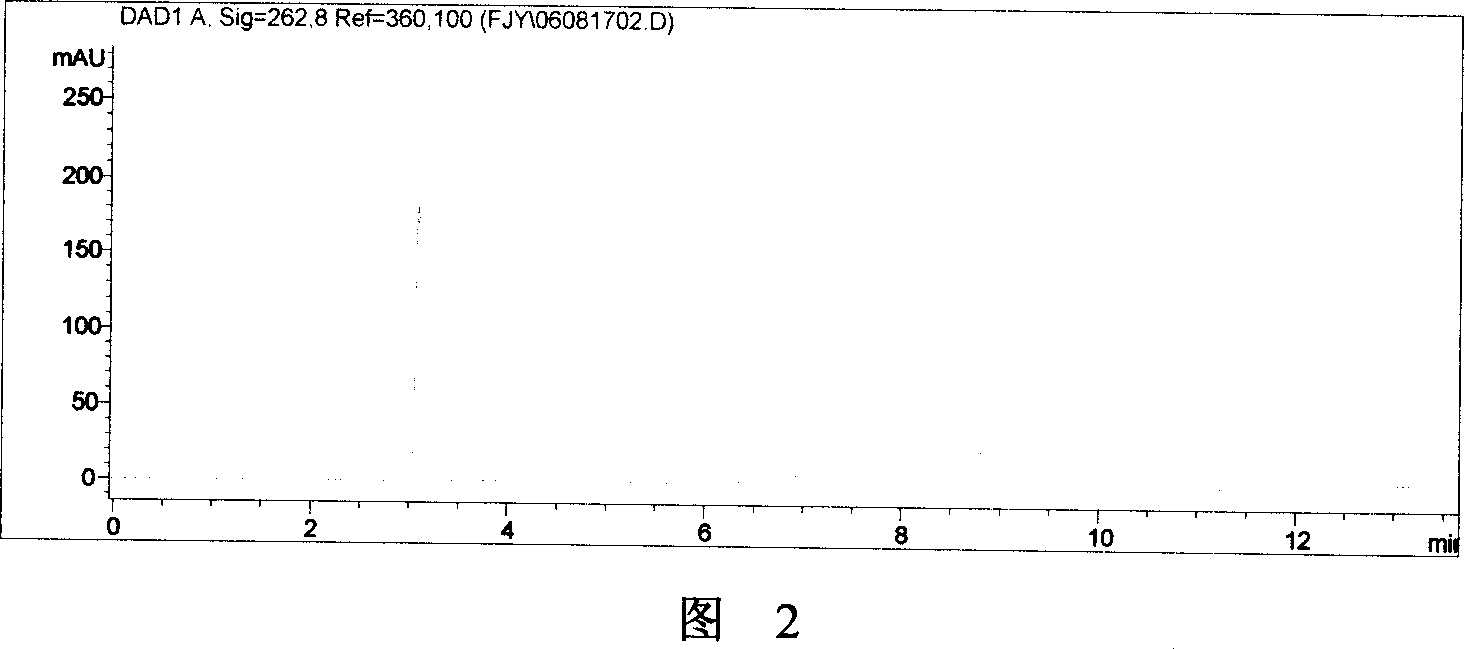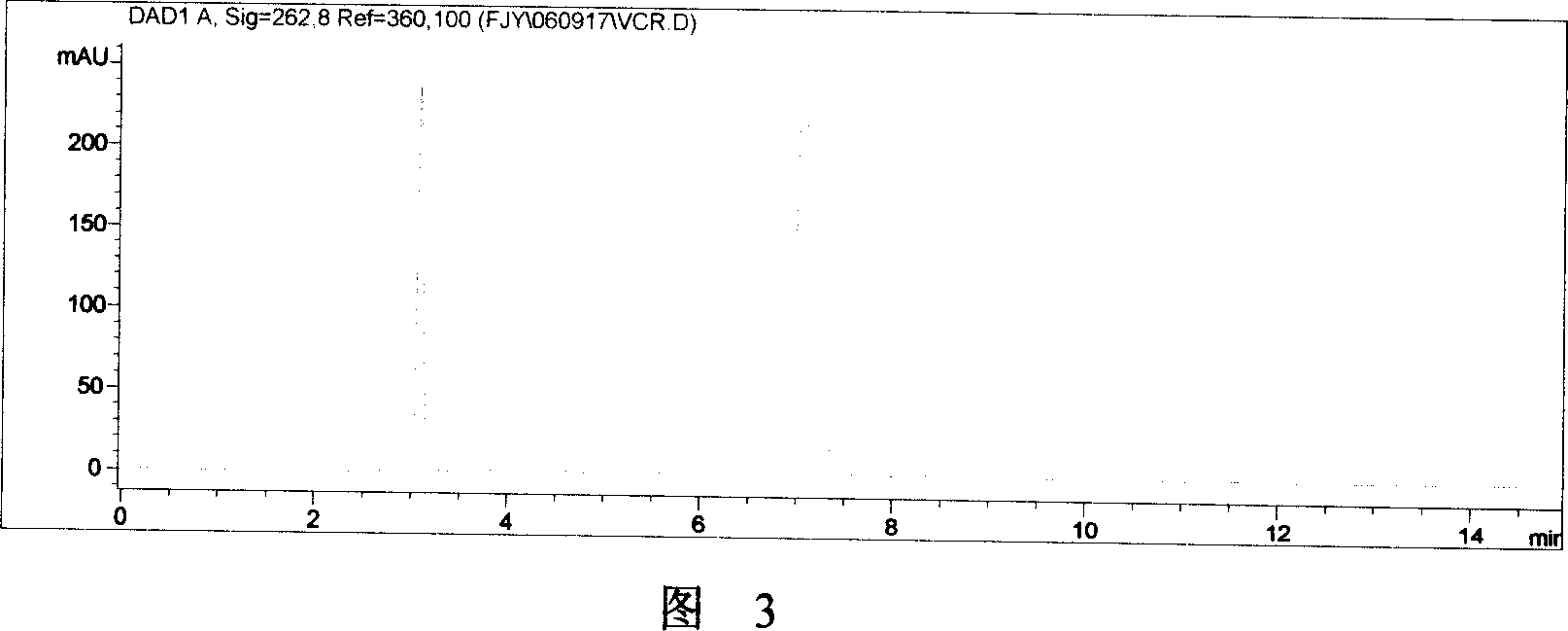Molecular engram polymer of vinblastine, and preparation method
A technology of molecular imprinting and vinblastine, applied in the field of organic polymer compounds, can solve the problems of high purification loss, irreversible adsorption, and unsatisfactory product purity, and achieve the effect of strong selectivity and high affinity
- Summary
- Abstract
- Description
- Claims
- Application Information
AI Technical Summary
Problems solved by technology
Method used
Image
Examples
preparation example 1
[0025] First add 0.1 mmol of vinblastine to the ampoule, add 0.5 mmol of methacrylic acid and 1.5 ml of toluene, and shake repeatedly on the oscillator for 60 minutes. Then add 4.5 mmol of ethylene glycol dimethacrylate and 15 mg of azobisisobutyronitrile, mix well by ultrasonication for 10 minutes, then blow with nitrogen for 5 minutes, vacuumize and seal the tube with an alcohol torch. The polymerization was initiated thermally and allowed to polymerize in a 60°C water bath for 18 hours. After the polymerization reaction is complete, the monolith is obtained in the polymerization tube, the tube is broken and the monolith is broken into smaller particles, and the resulting irregular shaped particles are sieved to 25-75 microns. To remove fine particles (<25 microns) in the 25-75 micron fraction, the material was repeatedly settled with acetone until the supernatant became clear. Then the obtained particles were transferred to a paper casing and placed in a Soxhlet extractor ...
preparation example 2
[0027]First add 0.1 mmol of vinblastine to the ampoule, add 0.5 mmol of methacrylic acid and 1.5 ml of toluene, and shake repeatedly on the oscillator for 60 minutes. Then add 4.5 mmol of ethylene glycol dimethacrylate and 15 mg of azobisisobutyronitrile, mix well by ultrasonication for 10 minutes, then blow with nitrogen for 5 minutes, vacuumize and seal the tube with an alcohol torch. The polymerization was initiated thermally and allowed to polymerize in a 40°C water bath for 24 hours. After the polymerization reaction is complete, the monolith is obtained in the polymerization tube, the tube is broken and the monolith is broken into smaller particles, and the resulting irregular shaped particles are sieved to 25-75 microns. To remove fine particles (<25 microns) in the 25-75 micron fraction, the material was repeatedly settled with acetone until the supernatant became clear. Then the obtained particles were transferred to a paper casing and placed in a Soxhlet extractor d...
preparation example 3
[0029] First add 0.1 mmol of vinblastine to the ampoule, add 0.5 mmol of methacrylic acid and 1.5 ml of toluene, and shake repeatedly on the oscillator for 60 minutes. Then add 4.5 mmol of ethylene glycol dimethacrylate and 15 mg of azobisisobutyronitrile, mix well by ultrasonication for 10 minutes, then blow with nitrogen for 5 minutes, vacuumize and seal the tube with an alcohol torch. The polymerization was initiated thermally and allowed to polymerize in a water bath at 80°C for 10 hours. After the polymerization reaction is complete, the monolith is obtained in the polymerization tube, the tube is broken and the monolith is broken into smaller particles, and the resulting irregular shaped particles are sieved to 25-75 microns. To remove fine particles (<25 microns) in the 25-75 micron fraction, the material was repeatedly settled with acetone until the supernatant became clear. Then the obtained particles were transferred to a paper casing and placed in a Soxhlet extract...
PUM
 Login to View More
Login to View More Abstract
Description
Claims
Application Information
 Login to View More
Login to View More - R&D
- Intellectual Property
- Life Sciences
- Materials
- Tech Scout
- Unparalleled Data Quality
- Higher Quality Content
- 60% Fewer Hallucinations
Browse by: Latest US Patents, China's latest patents, Technical Efficacy Thesaurus, Application Domain, Technology Topic, Popular Technical Reports.
© 2025 PatSnap. All rights reserved.Legal|Privacy policy|Modern Slavery Act Transparency Statement|Sitemap|About US| Contact US: help@patsnap.com



